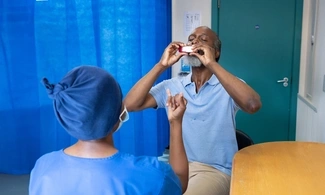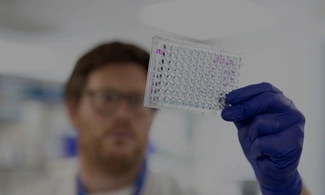1. Purpose
The purpose of the Safeguarding Policy is to ensure that in all of Asthma + Lung UK (A+LUK) activities that the safety and wellbeing of individuals and groups is considered and appropriately acted upon at times to protect those individuals or groups to maintain and protect the trust and reputation of A+LUK and its employees.
This policy is applicable to all staff, Trustees, volunteers and contractors and sub-contractors.
2. Scope
As a registered charity A+LUK has a position of trust for people with lung diseases and in society in general. It will therefore have interactions with many people including people affected by lung disease. This may include people who are vulnerable due to social, economic or health circumstances. Although the services provided by A+LUK may be individually tailored, it does not constitute the provision of a healthcare service and does not (currently) seek personal information to provide that advice. In this regard A+LUK staff do not have a responsibility for medical care but does have a moral and ethical responsibility to help protect people from harm.
A+LUK will endeavour to provide a robust series of policies and procedures and a supportive, learning environment to create an effective safeguarding culture.
This policy sets out the foundations for effective Safeguarding practice within A+LUK and throughout all activities. These areas include but are not limited to:
- Helpline
- Digital support including email support for people with lung disease and other projects involving digital media.
- Supporter Care Team
- Events and community
- Research and Policy
- Insight and patient involvement
- Media team including social media and forums.
- Advice and content team
- Fundraising
- Public events, meetings.
- Volunteers
- Support Group Network
- Any other contact with members of public
This policy is unable to cover every potential situation but is intended to clearly outline the principles of good safeguarding practice within A+LUK so that every employee, volunteer, representative or partner is confident and competent to contribute to a safe environment for the people it works with and interacts with, and can take appropriate action when required.
3. Definitions
Safeguarding is a term used in the United Kingdom and Ireland to denote measures to protect the health, well-being and human rights of individuals, which allow people — especially children, young people and vulnerable adults — to live free from abuse, harm and neglect. "Safeguarding people". Care Quality Commission. 18 June 2014.
Safeguarding children and promoting their welfare includes: Protecting them from maltreatment or things that are bad for their health or development. Making sure they grow up in circumstances that allow safe and effective care.
Safeguarding adults and children includes: Protecting their rights to live in safety, free from abuse and neglect. People and organisations working together to prevent the risk of abuse or neglect, and to stop them from happening. Making sure people's wellbeing is promoted, taking their views, wishes, feelings and beliefs into account. Vulnerable people (whether adult or child) can be neglected or abused. Abuse can take the form of: Physical abuse, Emotional abuse, Psychological abuse, Sexual abuse. Online vulnerability may be in the form of cyberbullying, grooming, losing control of personal data (including financial data, pictures, videos), overuse and addiction to digital devices, risk to personal reputation (e.g., by sharing opinions, views and feelings) and accessing inappropriate sites. Vulnerable people might also be subject to risk of trafficking, exploitation, female genital mutilation, radicalisation.
Safeguarding against terrorism, extremism and hate. The Prevent strategy, published by the Government in 2011, is part of their counter-terrorism strategy, CONTEST. The aim of the Prevent strategy is to reduce the threat to the UK from terrorism by stopping people becoming terrorists or supporting terrorism. In the Act, this has simply been expressed as the need to “prevent people from being drawn into terrorism”. The 2011 Prevent strategy has three specific strategic objectives:
Respond to the ideological challenge of terrorism and the threat we face from those who promote it.
Prevent people from being drawn into terrorism and ensure that they are given appropriate advice and support work with sectors and institutions where there are risks of radicalisation that we need to address. There is specific guidance for charities at https://www.gov.uk/government/publications/protecting-charities-from-ab…
This guide explicitly states that charities should:
- Implement reasonable risk management strategies to identify and mitigate the risk of your charity’s funds, assets, people and reputation becoming used for extremism.
- Implement the necessary safeguards to ensure that your charity doesn’t glorify terrorism or incite hatred on the grounds of race, religion or sexual orientation.
- Ensure that your charity does not promote views that denigrate those of a particular faith, race or sexual orientation.
A+LUK and its employees need to consider all possible scenarios where vulnerable people might be identified:
- Employees are in face-to-face contact with someone they believe may be vulnerable
- Employees are in telephone contact with someone they believe who be vulnerable
- Employees are in digital contact (social media messaging, email) with someone they believe may be vulnerable
- Employees believe that a dependant of a contact (e.g. children of a caller) may be vulnerable
- Employees witness (either in person or online) someone being made vulnerable
- Employees believe that the actions of A+LUK, an employee or representative, or a partner or associate may put, or is putting an individual or group at risk of vulnerability.
Any individual or group may be considered as vulnerable or in need of safeguarding. This may include employees, volunteers, associates and partners.
4. Policy
The following principles should form constant safeguarding themes through the culture, aims, policies and behaviours of all A+LUK activities.
Prevention
All applicable A+LUK employees receive formal safeguarding and Prevent training at induction and annually. The training is online with a recognised training provider. Successful completion of this training is mandatory and monitored by the People team.
A+LUK has policies and procedures in place to ensure that employees, volunteers, associates or partners have had the appropriate checks so that any prior history or behaviours that constitute a potential safeguarding risk can be identified and mitigated as appropriate.
All A+LUK employees, volunteers, associates or partners are aware of their safeguarding responsibilities as well as policies and procedures so that they may highlight areas of potential safeguarding risk to mitigate that risk. To have an open and reflective culture that encourages continual learning and appreciation of safeguarding risks throughout the organisation. The protection of vulnerable people from harm is a team effort and of paramount importance. Policies and procedures will encourage the accurate documentation of safeguarding assessments, concerns, incidents and actions. This will allow audit and learning for the organisation. Safeguarding policies and procedures will be easily accessible to all employees, volunteers, associates and partners. Internally they will be available on the SharePoint site.
Risk assessment
Projects and plans should have clear and documented consideration of potential safeguarding issues where there is potential risk. This should be documented and suitable mitigation should be put in place and clear and documented escalation procedures. All A+LUK employees should consider potential safeguarding impact of any role they are providing on behalf of A+LUK.
Detection
Through training, all employees, volunteers, associates and partners are aware of potential safeguarding concerns to look for and consider. Written notes should be taken to support escalation and reporting (as details may be forgotten later). If immediate safety is a concern then full name, age, location and telephone number should be noted where possible so that appropriate support can be arranged. Other relevant information to collect may include parents/carers details, school, GP, social worker. More detail on useful information to record is covered in this NSPCC document https://learning.nspcc.org.uk/media/1442/child-protection-records-reten….
All employees, volunteers, associates and partners are aware of the importance to escalate suspected and potential safeguarding issues urgently and to the appropriate people both externally and within A+LUK. Safeguarding concerns relating to A+LUK or its employees, volunteers, associates or partners can be raised by anyone, including the general public. Any safeguarding concerns relating to A+LUK or its employees, volunteers, associates or partners should be passed immediately to the Safeguarding Lead or their deputy for action.
Escalation and reporting - internally
All employees, volunteers, associates and partners are aware of who they should inform of any potential safeguarding incident. This would usually be their line manager or nominated contact within A+LUK. If unsure, or not practical, then the Safeguarding Lead (Chief Operating Officer) or their deputy (Head of People) should be contacted.
Escalation should happen immediately and should not be delayed by the completion of the Safeguarding Reporting form. The form should be completed in every case where there has been a safeguarding concern and can be found on the SharePoint site. The form should be completed with as much information as available at the time of the report. Additional notes can be added at a later date if necessary. The report should be emailed to the COO and People team inbox.
Sharing and reporting - externally
All employees, volunteers, associates and partners can quickly identify the correct procedures for which authorities (for example police, local authority) should be informed of safeguarding concerns. If there is imminent danger it may be appropriate to disclose relevant personal information and data about a person if there are safeguarding concerns. This would be under the vital interest provision of the UK GDPR. Attempts to obtain informed consent to share information should be made where possible, even where they are not necessary (i.e. to safeguard a vulnerable individual). The NSPCC has produced guidance for organisations on record retention and storage https://learning.nspcc.org.uk/media/1442/child-protection-records-reten….
Action: All employees, volunteers, associates and partners are aware of their responsibilities where safeguarding concerns are identified. This includes sharing the concerns internally and externally as appropriate and accurate documentation.
Whistleblowing
All employees, volunteers, associates and partners should be able and feel comfortable to raise safeguarding concerns about A+LUK employees, volunteers, associates and partners. This should be done internally in the first instance but may be appropriate to inform external agencies (e.g. police, local authorities) should the safeguarding concern be deemed serious or urgent enough. All employees to report concerns to who they feel comfortable to report to, first instance the line manager, or director or chief executive.
Review
A+LUK will continue to review its safeguarding policies and procedures on a regular basis and considering specific incidents or perceived risks. New areas of work by A+LUK, including new types of relationships with individuals or organisations, should prompt a review of all relevant policies and procedures. A+LUK will have processes in place to review all safeguarding incidents and concerns raised to see where additional action is required or where policies and procedures need updating. A+LUK will seek external safeguarding advice where it is appropriate to do so following a specific incident or concerns, or if there is a specific event or project which carries a significant or new safeguarding risks.
5. Roles and responsibilities
Safeguarding Lead
The Safeguarding Lead for A+LUK is the Executive Director of Finance and Corporate Services. S/he may delegate roles to other members of the team e.g. Clinical Lead, Head of People. The Safeguarding Lead is the Responsible Officer required to implement the Safeguarding Policy, producing specific assessments and reports for the Chief Executive and Trustees as required. S/he is supported in the implementation of the policy by the Clinical Lead and the Leadership team.
The Safeguarding Lead is responsible for maintaining and updating this policy considering feedback, events and new activities undertaken by A+LUK, and for reviewing the policy every two years to ensure it remains relevant for the organisation’s activities and risks.
New safeguarding concerns or incidents should be shared with the Safeguarding Lead at the earliest opportunity. The Safeguarding Lead should maintain a log of all incidents and a copy of submitted Safeguarding Forms. These should be stored in accordance with GDPR requirements. The log should be available for review by the CEO and Trustees at all times, with personal details removed as appropriate.
Heads of department
Heads of department will have responsibility for safeguarding within their teams. The Safeguarding Lead is the main point of contact for the Heads of department regarding safeguarding matters. They will be responsible for implementing, maintaining and updating safeguarding procedure for their relevant team(s). They should work with team
Members and relevant members of the Executive team to consider, identify and mitigate against potential safeguarding issues.
Any safeguarding incidents should be shared with the Safeguarding Lead at the earliest opportunity and communicated in writing as soon as practicable. Where this is not possible (due to the Safeguarding Lead being absent) or not desired (due to the Safeguarding Lead being potentially implicated) then another member of the Executive Team or Chief Executive should be informed. The Chief Executive (or Senior Responsible Officer) in their absence will escalate to the Chair of Trustees if deemed to be of sufficient gravity. Heads should promote a culture within their teams that promotes the wellbeing and protection of all vulnerable adults and children. This culture will be supported through ensuring safeguarding risk assessments are carried out for all events and services and regular reviews are carried out to identify potential risks and learning from any incidents. Heads should consider the potential for actual and spurious claims being made against individuals working for or on behalf of A+LUK.
The Safeguarding Lead will support Heads, teams and individuals to consider safeguarding risks in advance of events and new services. They should also encourage a culture of considering where potential safeguarding issues may have arisen and use these insights to inform the updating of Safeguarding policies and organisational learning.
Chief Executive, Executive Team and Board of Trustees
The Board of Trustees is ultimately responsible for safeguarding within A+LUK and as such Trustees are responsible for approving the Safeguarding Policies, with policy scrutiny on a regular basis by the Nominations and Remuneration Committee.
The Chief Executive is responsible for overseeing the performance of the Safeguarding Lead and staff in their implementation of the policy. The Chief Executive or Trustees may request written or verbal updates at any time should the need arise due to concerns around the implementation of the policy or an incident or to pre-empt a specific event or risk.
With reference to the A+LUK Incident Policy, the Finance and Audit committee will receive an annual high level overview of incidents that have occurred during the year.
For Level 2 (medium) safeguarding incidents, the CEO will determine if the Chair of Trustees needs to be informed. For Level 3 (serious) safeguarding incidents the Chair of Trustees should be notified immediately or the vice chair in their absence.
People Team
As part of standard employment checks, A+LUK only offers employment conditional on receipt of suitable references. For roles where a potential employee's primary duties relate to contact with potentially vulnerable adults or children (currently our Helpline team) A+LUK undertakes a standard Disclosure and Barring Service (DBS) check in addition. Data will be kept in line with the organisation’s data retention schedule and stored securely at all times.
As part of core induction processes, colleagues are provided with information relating to safeguarding principles and are required to read all policies relating to HR practices, including this Safeguarding Policy. In addition, managers provide colleagues with orientation and training in relation to the safeguarding procedures that must be followed for their duties. The People Team will keep documentary evidence of training having taken place. Team Heads will be responsible for identifying emerging learning needs and will work with the Safeguarding Lead to ensure that these needs are met. A+LUK only provides basic references for people leaving the organisation, which would cover the role and dates employed within the organisation. If the new employer requested further information about the employee, then this would be assessed on a case-by-case basis. Safeguarding concerns about an individual should be disclosed to any future employer.
Staff, Volunteers, Representatives
As set out above, as part of their induction all staff will be made aware of the Safeguarding Policy. Line managers highlight to the employee the practices and procedures that operate in relation to safeguarding in their teams. Staff have a responsibility to read and understand the policies as they apply to them and their role. If they are assisting another team or member of staff beyond their usual role, they should familiarise themselves with the relevant policies.
As part of the employment process, prospective employees will be asked to disclose any previous criminal convictions or pending investigations. It is the responsibility of individual members of staff to complete appropriate safeguarding training and assessments as appropriate to their role and responsibilities. Issues that prevent implementation of this policy and related policies must be highlighted to the Safeguarding Leads.
Where volunteers, representatives or partners acting as agents of A+LUK or who may, by implication, be associated with the organisation, it is essential that our standards and values are not compromised. In these circumstances, the highest level of safeguarding culture and behaviour should be maintained. This may require due diligence processes and/or sharing of the safeguarding policies. A+LUK may require a request of partners to disclose their safeguarding policies and address any specific concerns regarding members of staff in the employ of that partner. Documentation of any processes taken to maintain A+LUK safeguarding processes and inclusion within contracts is recommended.
Partners and Associates
Where A+LUK has a contract, relationship or is providing support (including financial) to an individual or organisation, a clear understanding of the organisation’s safeguarding values and policies should be shared where relevant, included in a contract. Organisations will be directed to the A+LUK Safeguarding Policy.
6. Training and implementation
A+LUK has a robust and auditable safeguarding training process. All staff will receive safeguarding training in the induction programme. Training is proportional to the safeguarding risks that an individual role may present and is repeated annually. Opportunity for further training will be provided where appropriate.
The extracted text from the new image is as follows:
7. Breaches of the policy
Employees will be given regular feedback on their performance including the identification of any learning and development needs. This feedback will highlight any areas that need addressing including in relation to safeguarding awareness. Employees will be supported to ensure that they can undertake their duties in line with our quality standards. Any issues will be managed in line with the Capability Procedure. Where employees fail to follow procedures, disciplinary action may result as set out in our Disciplinary Policy.







